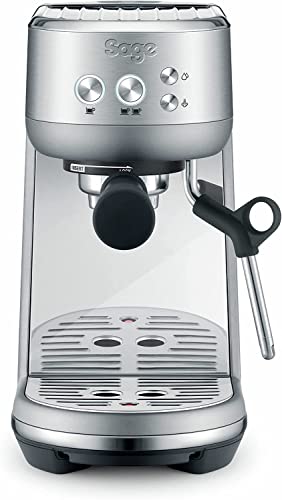10 Coffee Machines Espresso Projects Related To Coffee Machines Espresso To Extend Your Creativity
Coffee and Espresso Machines Espresso machines use pressure to push water through finely ground and tamped coffee beans. They produce a rich, tasty brew. Experts from the Good Housekeeping Institute recommend models that brew at a minimum pressure of 9 bars to get the most efficient extraction. Beware of brands that claim to use higher pressure than necessary. Types The espresso machine, also called a coffee and espresso maker, produces the more concentrated, premium coffee that you enjoy in your favourite cafe drinks using an average of 9 bars of pressure. These machines have many options, such as temperature and brew-strength control, programmable brewing and various sizes of drinks. They could also have manual or automatic steam wands to create the appearance of latte art using texturized milk. There are three types of latte art: semi-automatics, super-automatics and automated. Each comes with its own level of oversight and automation. The most well-known espresso machine type for specialty coffee shops is semi-automatic models. Semi-automatic espresso machines allow baristas complete control over the brewing process, however they are not as user friendly as fully automatic or automated machines. It is still necessary to grind beans, fill and tamp the portafilter and adjust the extraction duration to get the highest espresso shot. Automated machines come with a built-in mill and measure and grind your grounds. They automatically dispense enough water to make espresso, and usually have an adjustable beverage size. In our laboratory tests, they were the most popular kind of espresso machine. best portable espresso makers offer a great combination of control and consistency. Functions If you opt for a pump-driven or steam-driven model, you'll get a reservoir that holds the water that is used to make your coffee. There's also an element of heating that heats the cold water, generating the pressure necessary to extract coffee from the grounds. When the button to brew is pressed when the button is pressed, the valve that lets water into the brew chamber is closed so that only hot water under intense pressure can pass through the portafilter, and then into the ground coffee. It takes around 25 minutes for the water to brew into espresso. The insulated tubing referred to as the hot-water tube runs from the reservoir to the spout that is on top of your machine. The heating element that resists heats the water as it passes through the warming plate made of metal and the aluminum tube. Once the spout is turned on, place your cup under the spout to catch the espresso as it flows through the portafilter into your cup. The coffee maker also comes with a steam wand that can be used to heat up and froth the milk for drinks that are espresso-based, such as cappuccino and latte. Automated machines take the guesswork from making your own. They operate with a single button they can be programmed and grind and measure beans for you as well as to crush them down. In our Lab tests, they generally perform best because they are easy-to-use and don't demand an extensive amount of user expertise. Materials The inside of an espresso machine is a forest of copper tubes stainless steel boilers, and sophisticated firmware. They may appear complex but at the core they perform one simple thing: force hot water through finely ground coffee. When you are looking for an espresso maker, think about the size and space requirements, drink options, energy-saving alternatives, and brewing precision. Look for a button that can be used to activate the steam wand. It is used for making the latte art and frothing the milk. A gauge for pressure on the front of the machine lets you know the boiler and pump operating pressure. You should choose a coffee maker with two needles to see the pressures that are minimum and maximum. If you're looking for more than espresso, then you should consider a machine with different brew sizes. This includes the ristretto. There are models that have a removable frothing hopper that allows hands-free, easy frothing. You can also switch between various kinds of milk quickly. Choose a model that has an integrated softener in case you have hard water to prevent mineral accumulation and to keep your espresso fresh. Some manufacturers use a thermostat that is digital, integral and proportional, to ensure an exact temperature range while brewing espresso. This feature ensures a consistently excellent espresso cup every time. This feature also helps reduce cost of energy since the machine only runs when necessary. Maintenance As espresso and coffee machines become more widely available for use at home, the proper maintenance of this equipment becomes more essential. The most efficient equipment can make a a huge difference in the quality of your coffee, but only if it's maintained. A regular maintenance and cleaning routine should include everything from cleaning the steam wand and group head to decaling, and finally changing the water filter regularly. As a rule of thumb, if you are making between two and five cups of coffee every day, you should wash the majority of your machine every week. Certain parts of the machine may require cleaning every two to three weeks. These include the water tank and the grinder. In addition, you must backflush your system every week. This is a process that involves locking the portafilter in place and running the brew cycle multiple times. This helps to remove any stray coffee grounds or oils left behind. You can also use a brush or cleaner specifically designed for espresso machines to clean the portafilter.  Maintaining your espresso and coffee machine properly can ensure that it lasts longer. It is important to maintain the expensive espresso machine.
Maintaining your espresso and coffee machine properly can ensure that it lasts longer. It is important to maintain the expensive espresso machine.